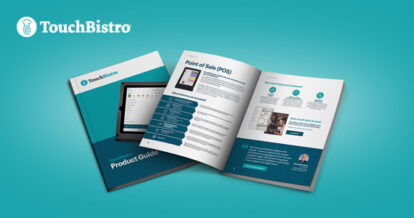It’s mid-afternoon on a Tuesday and your restaurant is in the thick of a sleepy, post-holiday lull. A group of guests walks through the door. Their next experience is up to you. Do they see a few diligent staff keeping busy, or are they greeted by a welcoming committee with too much time on their hands?
You can avoid the latter scenario and offer friendly (but not overwhelming) service by mastering the practice of the split shift.
Knowing when and how to use split shifts in your staff schedule is an essential ingredient for success as a restaurateur.
In this article, we’ll answer the burning question “what is a split shift?” as well as cover:
- How to use this tactic
- How split shifts impact scheduling
- What rules you need to follow
- What advantages splitting shifts offer your restaurant and your employees
Get your notebooks out, folks.
Split Shift 101
Split shift work is an alternative to the typical nine-to-five grind that separates the workday into two or more chunks, but generally still adds up to an eight-hour day. The break in between – usually at least two hours – is considered time off, which means it’s unpaid.
To be considered a true split shift, the hours have to be included on the schedule that has been set by the employer ahead of time. An employee requesting a long lunch every so often to fit in appointments doesn’t count as work split shifts.
How Do Restaurants Use Split Shifts?
Typically, restaurateurs implement this alternative workday style to ensure their busiest times of day are covered. They can deliver the best guest experience possible without overstaffing the employee schedule for slow times.
If you’re already in the restaurant industry, you’re likely well aware that it’s facing a labor shortage. When your labor resources are slim, breaking up shifts can be a great way to ensure that your rush periods run smoothly – but also that you’re not contributing to staff burnout and low attendance by asking employees to work long stretches of hours.
Split-shifts are also used to keep employee labor costs down during slow times. Remember that welcoming committee at the beginning of the story? When your restaurant is quiet, having too many employees on the floor or in the kitchen is a poor management practice and a quick way to increase labor costs and hours.

Scheduling a Shift Time in Two
If you want to make split shifts work for your business, you need to start with your staff schedule. If employee scheduling isn’t something you oversee yourself, make sure your restaurant manager understands how to plan and supervise these types of workdays for each employee.
Scheduling Split Shifts
Scheduling workforce management can make or break guest experience at any restaurant, including yours. When you don’t have enough staff in the front or back of house, it slows down operations and ultimately has a negative impact on your bottom line.
A good restaurant manager will use their knowledge of operations and finance for scheduling split shifts. Their past experience will help ensure your staff schedule runs like a well-oiled machine. This will not only help your restaurant stay profitable – it’ll keep employee morale up and your guests happy.
If you have several restaurant locations or more than one person creating your schedules, it’s a good time to invest in some hours of employee training.
How Rules Vary Geographically
Restaurateurs in the U.S. who want to implement alternative work schedules should familiarize themselves with the Federal Fair Labor Standards Act (or hire a lawyer to help translate the legalese). This act outlines rules around split shifts. If your employees are part of a union, you may be subject to other work regulations, too.
It’s important to note that rules around these types of employee shifts can differ depending where you’re located.
1. New York
In the Empire State, workers are entitled to receive spread of hours pay when the length of time between the start and end of their workday exceeds 10 hours. This pay includes time off between split shifts.
Receiving spread of hours pay means an employee should get one additional hour of work pay at minimum wage for the day whenever they work a split shift.
2. California
In the Golden State, any employee with more than one hour off between split shifts should receive a premium of an extra hour’s pay for the day at minimum wage or higher.
However, there’s a catch if the employee makes more than minimum wage.
“Any money earned over and above the state, or local, minimum wage will be credited towards the employer’s obligation to pay the split shift premium,” states the California Department of Industrial Relations. This means if any of your front- or back-of-house staff make above the hourly minimum wage, you may not have to pay this extra hour for a split shift.
3. District of Columbia
In cities like Washington, D.C., employees are also entitled to one additional hour of split shift pay at minimum wage for each day they work.
Like in California, the time off between a split shift needs to be longer than an hour.
4. Illinois
While Illinois doesn’t have any specific pay laws around split shifts, the Chicago Fair Workweek Ordinance does prevent employers from scheduling staff with less than a 10-hour break from their last shift.
However, this only applies to salaried workers earning $50,000 per year or less, or hourly workers earning $26 per hour or less.
5. Ontario
In cities like Toronto, Canada, employers only have to provide eight hours off in between shifts. However, there is a way around this if needed when assigning shifts (for example, early breakfast/late dinner shifts).
“Rest between shifts is not required if the total time worked during both shifts does not exceed 13 hours,” according to the Ontario Ministry of Labour, Training and Skills Development.
That being said, giving your employees at least eight hours off between work shifts so they can get a solid night’s sleep is still the right thing to do.

Perks of Scheduling Shifts at Your Restaurant
It’s time to dig into the fun stuff: how split shifts can benefit you as a restaurateur – and your employees and guests.
1. A Split Means Cost Savings
We’ve already covered this one, but it’s worth reiterating – flexible scheduling that allows you to have the right staff working at the right times (no more, no less) contributes to a healthy bottom line and work environment.
2. Enhanced Guest Experience
As a restaurateur, you want your guests to have the best experience possible every time they dine with you. To make sure that happens, you can’t be understaffed.
Using split shifts provides the coverage you need during peak periods. This way, your employees can give their full attention to delivering exceptional guest service, whether in the front or back of house.
3. Time to Support Your Staff
You’ve likely been out for a meal and watched a frantic server running from table to table with seemingly no help in sight. Perhaps you’ve been that server. Maybe this has even happened in your own restaurant.
Employee retention contributes drastically to the profitability of a restaurant. If your staff are overworked and under resourced, there’s a decent chance you could lose them.
Split shift scheduling ensures your employees will have the support they need to do their jobs in a way that’s as stress-free as possible. Plus, for front-of-house servers, split shifts place them on the floor at peak times when they’re likely to earn more tips from higher table turnover.
4. Greater Productivity With a Split
“As the number of hours an employee works goes up, their productivity goes down,” says this article by Sling.
Give every employee a break – literally – in the form of split shift, and allow them to recharge their batteries. This is important for all employees, but is especially helpful for front-of-house staff, who need to put on a happy face for guests.
5. A Flexible Work Environment
If you employ millennial or Gen Z workers, you likely know how much they value flexible work environments.
Split shift scheduling can be a great way to give your employees the freedom they want or need in their busy lives. This type of alternative workday can afford people split shift workers the time to drive an elderly parent to an appointment or pick up a child from daycare.
Final Considerations for a Split Shift Schedule
Now that you’re ready to split shifts into your employee schedule, make sure you understand and follow the laws of split shift schedule hours in your region before you move forward.
When you’re planning your split shift schedule, communicate with your employees early and often. The further in advance an employee knows when they’re needed at work, the less likely it is that any issues will arise.
You can even take this one step further into your hiring practices. Ask your interview candidates about their openness to splitting their work hours into shifts. That way, once you’ve chosen the successful candidate, they’ll already be familiar with the way your restaurant operates.
All right, all right, now you’re a pro. Gather your team and go wow some guests!
Download your free employee handbook template
Sign up for our free weekly TouchBistro Newsletter







